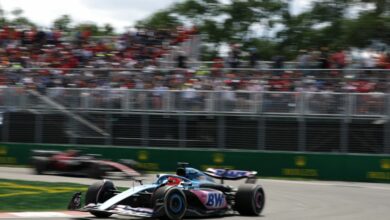Ferrari 676: The Game-Changer in F1 2024 Season – Lighter, Faster, and More Efficient
Ferrari’s new contender for the 2024 F1 season, the 676, has hit the headlines with its weight meeting the FIA’s stringent 798 kg limit. This significant weight reduction is poised to make the car faster by “a tenth and a half” and improve tire wear, potentially enhancing Ferrari’s championship chances.
Key Takeaways:
- Weight Breakthrough: The Ferrari 676 meets the FIA’s weight limit of 798 kg for the first time in the ground effect era, thanks to a more compact battery, a narrower gearbox, and a lighter body. This achievement marks a significant step forward in Ferrari’s F1 technology.
- Performance Enhancement: Experts predict that the weight reduction could translate to a speed boost of “a tenth and a half” on tracks like the Circuit de Barcelona-Catalunya. This improvement could be a game-changer for Ferrari in the upcoming season.
- Challenges and Comparisons: Last year, Ferrari struggled with tire wear issues and weight constraints. However, the 676 has not only addressed these challenges but also shown promising results in wind tunnel data and simulator tests, raising hopes for a competitive season against rivals like Red Bull.

Article: The Formula 1 world is abuzz with Ferrari’s latest revelation – the 676, a machine meticulously designed to challenge the very limits of speed and efficiency in the 2024 F1 season. Reports suggest that for the first time since the advent of the ground effect era, Ferrari has managed to align with the FIA’s weight limit of 798 kg, a feat that not only speaks of engineering excellence but also hints at a competitive edge for the Italian marque.
The secret behind this notable weight reduction lies in a series of strategic modifications including a more compact battery, a narrower gearbox, and an overall lighter body construction. These advancements are not just about shedding kilos; they translate into tangible performance gains. According to F1 technical calculations, a 10 kg reduction can lead to an improvement of about three-tenths of a second. Therefore, the 676, being lighter, is expected to be faster by “a tenth and a half” on circuits like the Circuit de Barcelona-Catalunya, as per insights from Motorsport.com.
Reflecting on the past, the SF-23 F1 car of the previous year tipped the scales 6 kg over the limit. The transformation this year is largely attributed to the ingenuity of Enrico Cardile, Ferrari’s technical director. His vision and execution have significantly bolstered Ferrari’s prospects of contending for the title.
One of the critical challenges Ferrari faced last season was unpredictable tire wear. With the 676, there is an air of optimism that this issue might be mitigated, if not entirely resolved, owing to the car’s reduced weight.
In contrast to their rivals, Ferrari has also aced the FIA crash test with their 2024 car, a hurdle that Red Bull’s RB20 reportedly stumbled upon. This success, coupled with favorable outcomes from wind tunnel and simulator tests, suggests a bright season ahead for Scuderia Ferrari.
There’s a palpable excitement surrounding Ferrari drivers Charles Leclerc and Carlos Sainz, who are anticipated to benefit immensely from the advancements of the 676. After a season where Sainz emerged as the only non-Red Bull driver to clinch a race, the duo is eyeing more victories and possibly the championship.
As the motorsport community eagerly awaits the official unveiling of the Ferrari 676 on February 13 at Fiorano, questions linger about its potential dominance over rivals like the RB20. While the future of this high-stakes rivalry is yet to unfold, one thing is clear – Ferrari is not just ready to compete; they are geared to lead.


